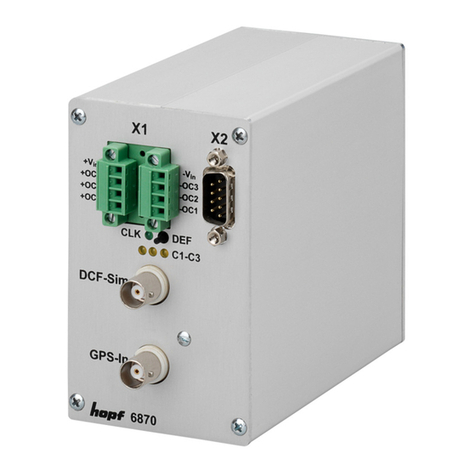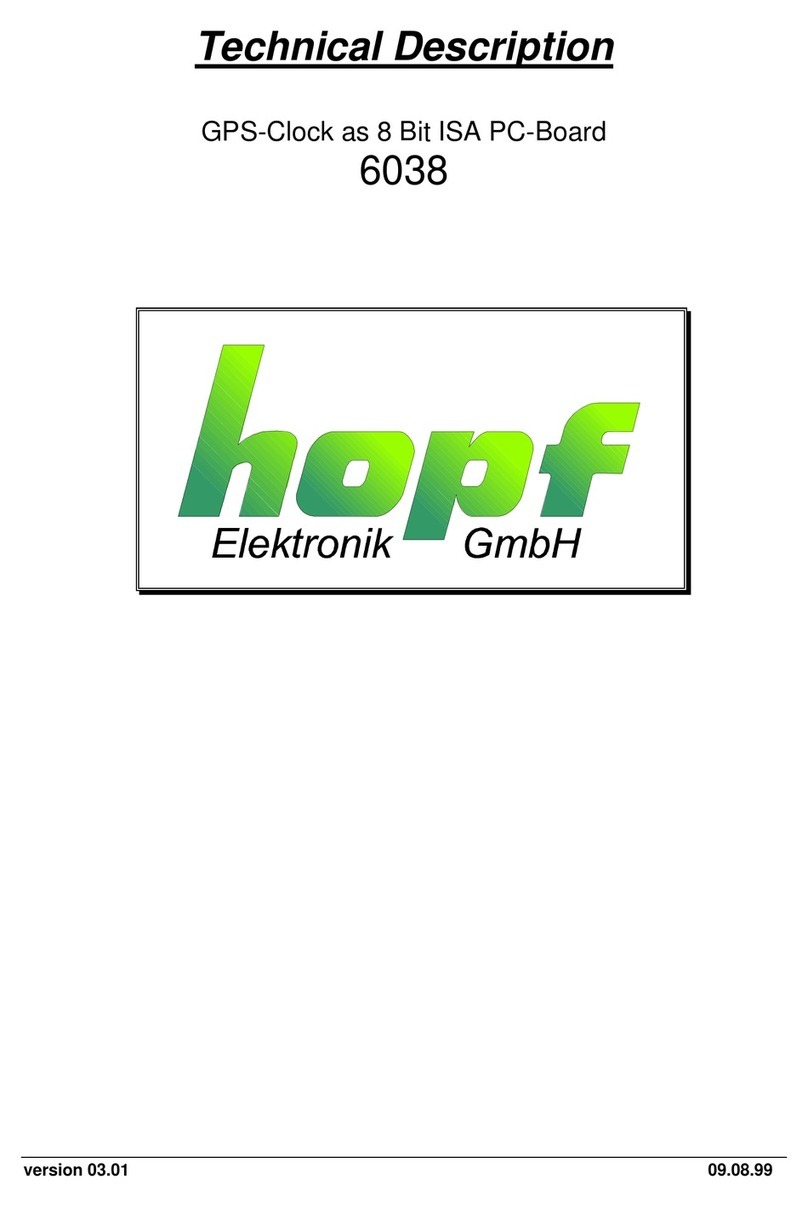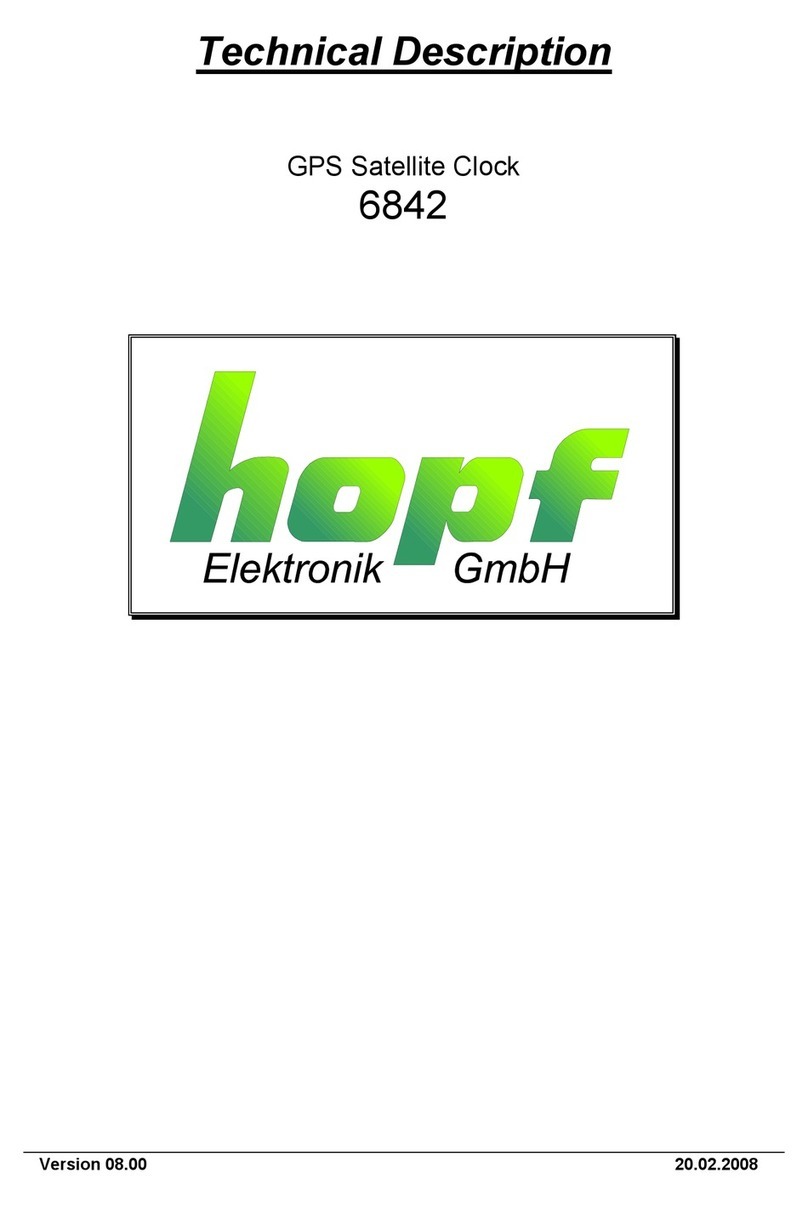GENERAL INFORMATION
GPS Satellite Controlled Clock 6875 - Ver. 04.00 Page 5
1General information
The 6875 radio-controlled clock is a universal GPS reception module with a highly accurate time
reference developed for controlling industrial processes. The 6875 snap-in module for 35mm
(DIN) track mounting is fitted with three PhotoMOS signal relays, an analogue and digital TTL
output and up to four independent serial interfaces.
The PhotoMOS signal relay outputs can be used, for example, for the SPS or measuring proc-
ess control. Following output modes are available:
• DCF77 pulse
• System status (radio-controlled or quartz)
• Status of the power supply on/off
• Cyclical pulses
• Non-cyclical pulses (1 pulse per day at a defined time, 1 pulse per year at a defined
time and on a defined date)
The analogue output can be used to synchronize DCF77 or IRIG-B systems.
The serial interfaces COM0...COM3 are used for the output of different pulses and data strings.
Each interface can be configured with hopf remote software.
The 6875 snap-in module has further features:
• Potential-free antenna circuit
• All outputs potential-free
• All settings can be parametered via the COM0 serial interface
• COM1 interface can be switched from RS232 to RS422 via configuration software
• switchable analogue output IRIG-B / DCF77
The following versions of the system are available (indicated on the identification label):
• FG6875G00 (GPS 6875 snap-in module basic version) with
• 3 PhotoMOS pulse outputs
• serial interface COM0: RS232
• serial interface COM1: RS232/RS422
• simulation output for DCF77 antenna simulation or IRIG-B 12x (x=0..3)
• programming cable, remote software and technical documentation included
• FG6875G01 (6875 snap-in module) with
• GPS 6875 snap-in module basic version FG6875G00
• Serial interface COM2: optical output
• FG6875G02 (6875 snap-in module) with
• GPS 6875 snap-in module basic version FG6875G00
• Serial interface COM2: optical output
• Serial interface COM3: optical output
• FG6875G03 (6875 snap-in module) with
• GPS 6875 snap-in module basic version 6875
• Serial interface COM2: optical output
• Serial interface COM2: optical input
The configuration software on the CD supplied is available for the most common MS Windows,
Linux and Sun Solaris operating systems (for more details see 4.1).
































